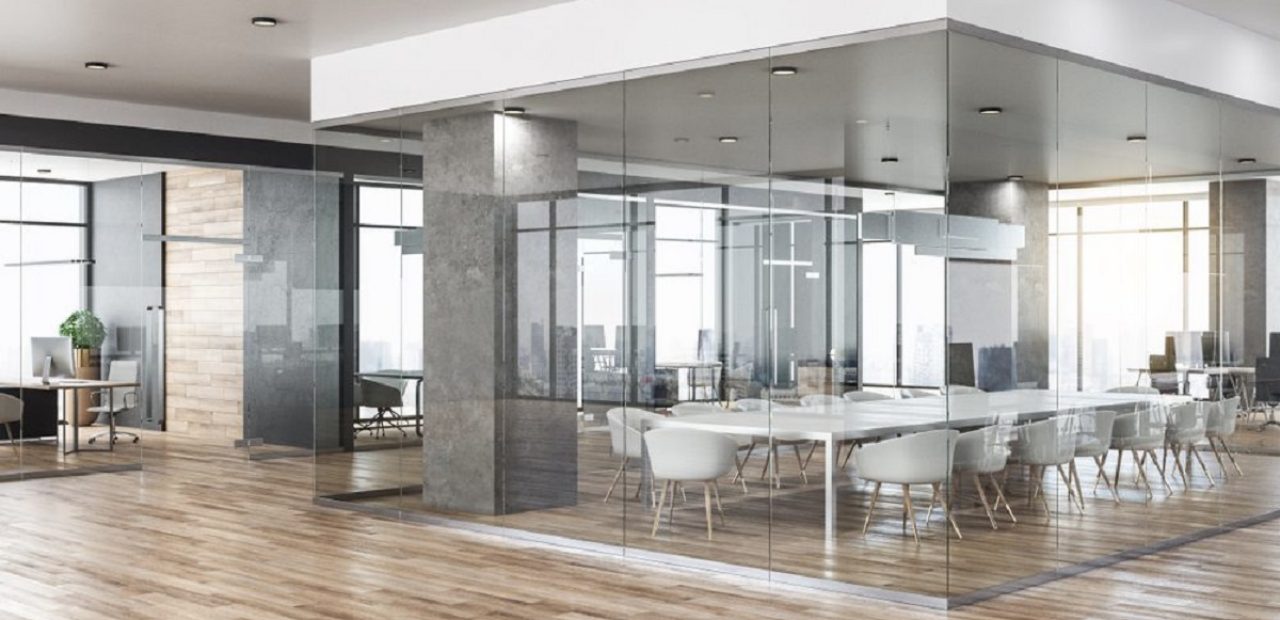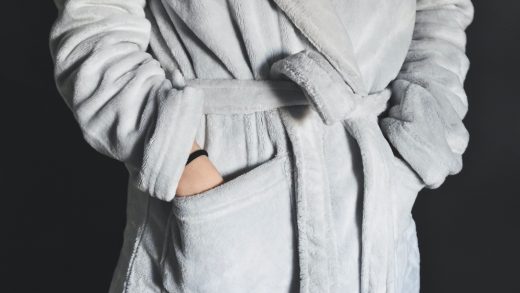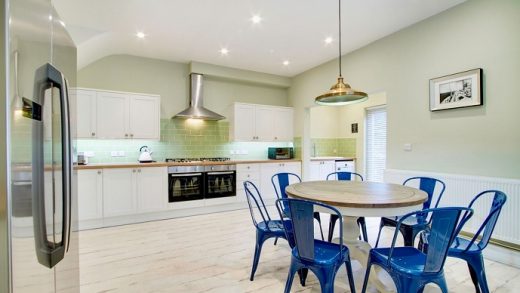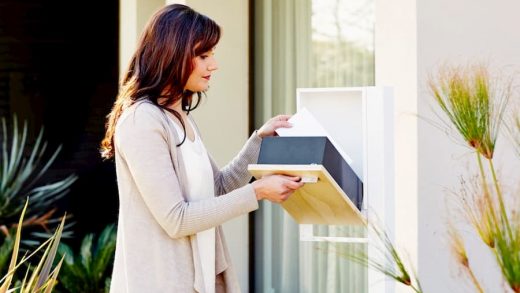How to Choose the Right Flooring for Your Office
Flooring has a big impact on the overall look of any space, including commercial offices. The floor you end up choosing can make the office look warm and inviting or the other way around. But, besides the aesthetics, you also need to make sure the flooring is high-quality and durable to withstand foot traffic. Luckily, you have quite a lot of great options to choose from and make the office look outstanding.
Contents
Rubber Vinyl Flooring
First on the list is rubber vinyl flooring. It’s a floor that provides you with the much-needed comfort while walking and looks amazing. Additionally, rubber vinyl flooring is durable, waterproof and easy to maintain, meaning it’s the perfect choice for the office. Rubber vinyl floors are usually quite thin (around 3-4mm) but they are resistant to damage regardless of the thickness.
There’s one more important reason why people go for rubber vinyl floor when it comes to office flooring. Rubber vinyl is considered to be soundproof. This is an important feature that the office floor needs to have, considering that the employees need a pleasant and quiet environment to work and focus. A lot of things affect the productivity of the employees and flooring is one of them.

source: selectfloorcraft.com
And when the visual aspect is concerned, rubber vinyl flooring comes in many bright and dark colours, from plain black to bright orange, green and blue, meaning that this kind of flooring is anything but boring. It’s made from synthetic rubber and has a very high quality.
One thing you need to pay attention to when it comes to installing rubber vinyl flooring is the subfloor and how ready it is to be covered. If the subfloor is moist then you need to wait until it dries off completely before installing the rubber floor because otherwise, the risk of malfunction is big.
Vinyl flooring is an increasingly popular solution and a cost-effective one as well. When you think about it, the office space can be quite big so a cost-effective solution might be the best option for you. Plus, once you install the rubber flooring correctly you won’t have to do any repairs or replacements for years to come.
Sometimes the simplest of solutions is the best solution there is. So, why go over the trouble of installing an expensive floor that requires excessive care when you have vinyl as an option?
Commercial Quarry Tiles
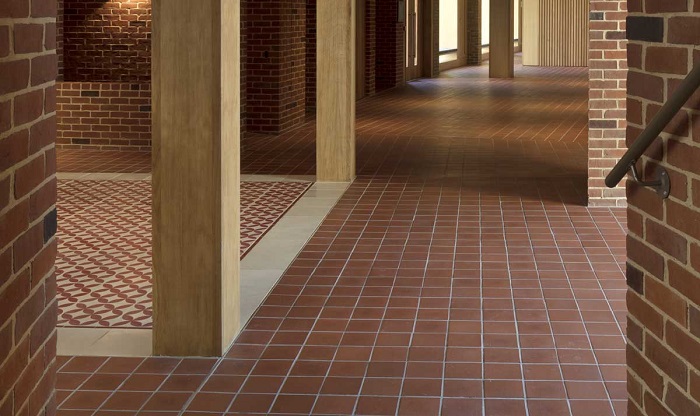
source: ketley-brick.co
Quarry tiles are durable, slip-resistant and can endure traffic and high impact. They are made from natural materials, mostly clay. Compared to regular ceramic tiles, quarry tiles have a lower price and a more rustic look. In the production process, quarry tiles are being baked at an extremely high temperature which makes them dense and resistant to stains, water and weight. So, if you were looking for something rather unusual for your office floors, then the quarry tiles are the right choice for you.
Quarry tiles usually come in a dark brown, brown and beige colour and can be assembled as a mosaic for a better visual appeal. Unlike rubber vinyl flooring, quarry tiles are quite thick meaning they’re perfect for commercial applications where there’s a lot of wear and tear and heavy foot traffic.
Linoleum Flooring
Linoleum is also part of the group of floors that are durable and easy to install. And again, you won’t have to spend a big amount of money to acquire it. Linoleum is made from natural materials: cork, jute, rosins, wood flour and linseed oil. That means that it’s an eco-friendly option and renewable. Unlike other flooring types, you make nature a favour by choosing linoleum.
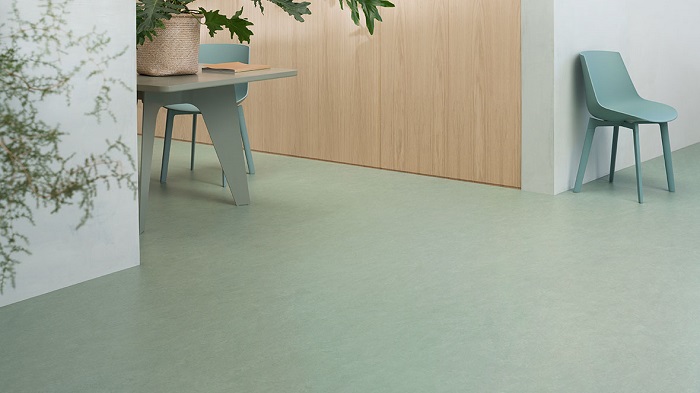
source: forbo.com
Linoleum is soft and walking on it doesn’t create sounds. You can even slide a chair across the office without anyone noticing or hearing about it. It’s also waterproof, stain-resistant and easy to maintain. Linoleum doesn’t get damaged easily and even when it does it’s easy to repair. You can find linoleum in a wide range of colours and patterns, so if your intention is to add colour to the office, why not start with nicely coloured and patterned floors?
Quality Laminate Flooring
Laminate is quite a popular choice among house owners who need floors that look good but don’t cost a fortune. Laminate mimics hardwood floors, tiles, and parquet to the point when you can really tell the difference, but is budget-friendly and easy to install. Since it has amazing features, laminate is a popular choice for commercial buildings too.
The installation of laminate flooring is as simple as it can be. All you need is a flat base, a thin layer of foam and a steady hand to assemble the laminate planks one by one to perfection. Once installed, laminate flooring is firm, pleasant to walk on and easy to clean up. All you need to do is mop the surface and it will become sparkly clean again.
Laminate doesn’t scratch easily and doesn’t change a lot visually, even after some years have passed it will still look as good as new. You can find different types of laminate, one similar to an oak hardwood floor, walnut, oak and hickory hardwood among others.
Modern Terrazzo Flooring
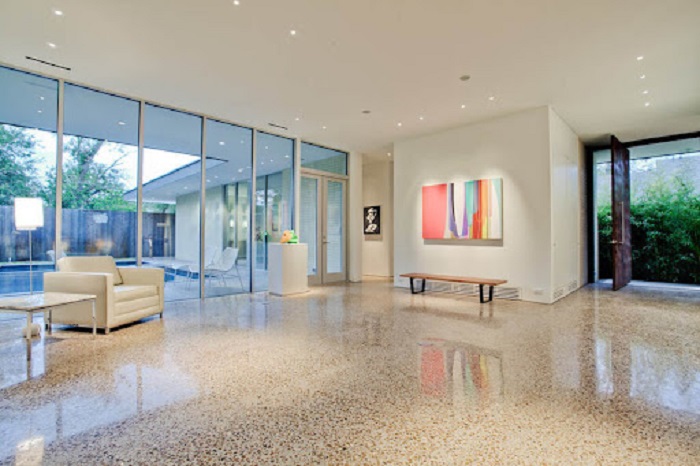
source: decor10blog.com
Terrazzo floors consist out of small pieces of marble, quartz, glass, small rocks, granite and other similar materials along with epoxy and resin that give that smooth finish. Terrazzo floors look like a mosaic and are solid, durable and damage-resistant. Terrazzo floors originate from Italy. Italians used small chunks like that to cover their terraces, and that’s where the name comes from.
Nowadays terrazzo flooring can be seen quite often in modern office spaces. Terrazzo floors look very elegant and luxurious yet simple and clean. It’s a sustainable, functional and very low-maintenance floor that will completely transform the way your office looks (for the better).
There really aren’t any limitations when it comes to picking a design for the terrazzo flooring. It can be as basic or as colourful as you want. And considering how much time people spend at the office it’s only fair for it to be a pleasant place to stay at. That can be achieved with the terrazzo floor. It’s as good for the eyes as it is for the overall health since it doesn’t contain toxic compounds. What more could you need from a floor?

